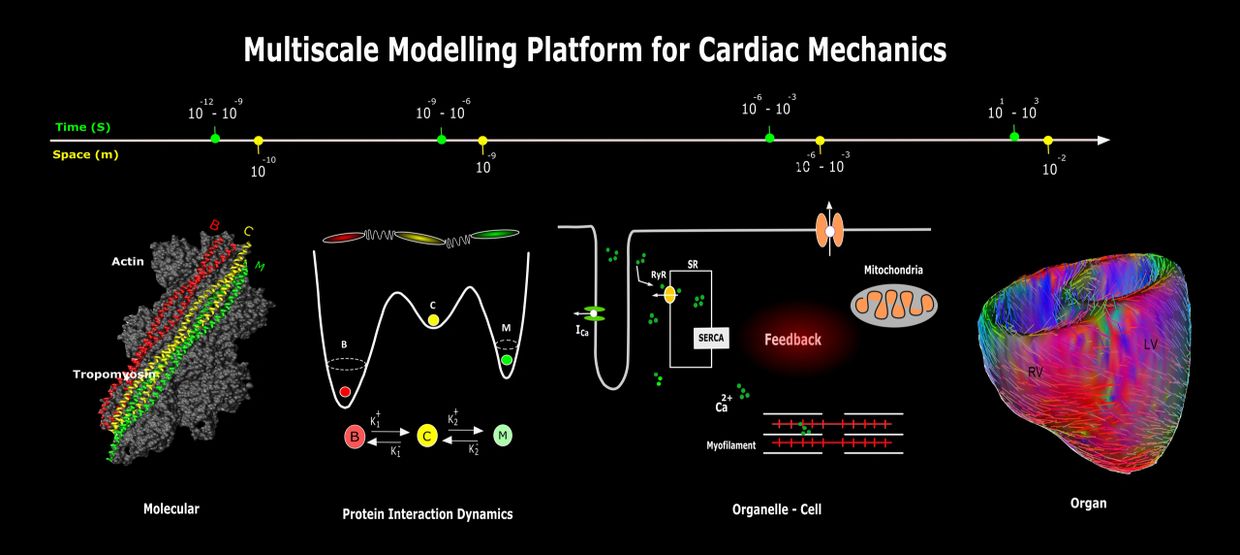
Sperm Rheotaxis
Sperm rheotaxis, the mechanism through which sperm cells maneuver through fluid flow to locate the egg, is essential for successful fertilization but is still not fully understood. This research aims to addresses this gap and advance the understanding of sperm rheotaxis by integrating advanced experimental and computational methods to investigate sperm motility within the female reproductive tract.

Multiscale Models for Cardiac Mechanics
In this project, stochastic multiscale models that can be used in both cardiac mechanics and electrophysiology areas of research will be developed. These models span-out the molecular, Brownian, and Langevin dynamics of the contractile (sarcomeric proteins) mechanism of cardiac cells and up-to-the finite element analysis of the tissue and organ levels.

Cardiac Mechanics
In this project, we aim to use a coupled electro-mechanical finite element model (FEM) to simulate the human heart function ( truncated bi-ventricular 3-D geometry) at different disease conditions. The topological organization of heart muscle fibers and their complex orientation will be determined using DTMRI technique to quantify their effects on the blood pumping function. The outcomes from this project are expected to adequately model the cardiac mechanics and to study the fibers structure variations across the heart wall to obtain reliable patients specific simulations.

Cardiac Thin Filament Activation
In this project, theoretical and computational models will be used to study the thin-filament activation process during cardiac contraction. In particular, the we plan to use the Brownian-Langevin dynamics principles to derive a coarse-graining multiscale myofilament model. This approach is expected to link atomistic molecular simulations of protein-protein interactions in the thin-filament regulatory unit to sarcomere-level activation dynamics.

Bioinspired Microtechnology and Microfluidics
Inspired by respiratory system in insects, in particular the rhythmic wall contractions found in insect's tracheal tubes, this project aim to develop novel bioinspired micropumps and valves that can funcational particularly well in the low Reynolds number flow regime. These bioinspired actuators are expected to contribute to the modern revolution in medical devices.

Innovative Cardiac Assistance Devices
In this project, we aim to use a the recent technology in Nanotechnology, Microfabrication, 3D printing, and Bioprinting to propose and build a new generation of cardiac assistant devices including but not limited to drug coated stents, and left ventricular assist device (LVAD).
This website uses cookies.
We use cookies to analyze website traffic and optimize your website experience. By accepting our use of cookies, your data will be aggregated with all other user data.